Do you want a cheap and affordable lighting solution to work best based on your project design? Then you may not need to look far since individually addressable LED strips are a crucial component of great spaces.
Individually addressable led strips are perhaps the most versatile type of programmable led lights. They enable us to develop stunning and complex illumination effects. They transform our spaces from simple spaces into visual marvels.
In light of this, this article outlines the technical details of addressable LED strips and assists you in choosing the one that is suitable for your use.
What Are Addressable LED Strips?
Addressable LED strips are digital strips that have integrated circuit chips to let you control a single LED or a group of LEDs. They are “addressable” because of the additional provision to control a particular strip area.
As a result, you can customize LEDs lit on the entire strip with unique and different colors to suit your design. Besides, you can program the LEDs on a strip segment to flash, cycle over the color spectrum, synchronize with sounds, etc.
Due to their properties, addressable LED strips are common in displaying animations. They can generate a variety of effects instantaneously along the LED strip segments.
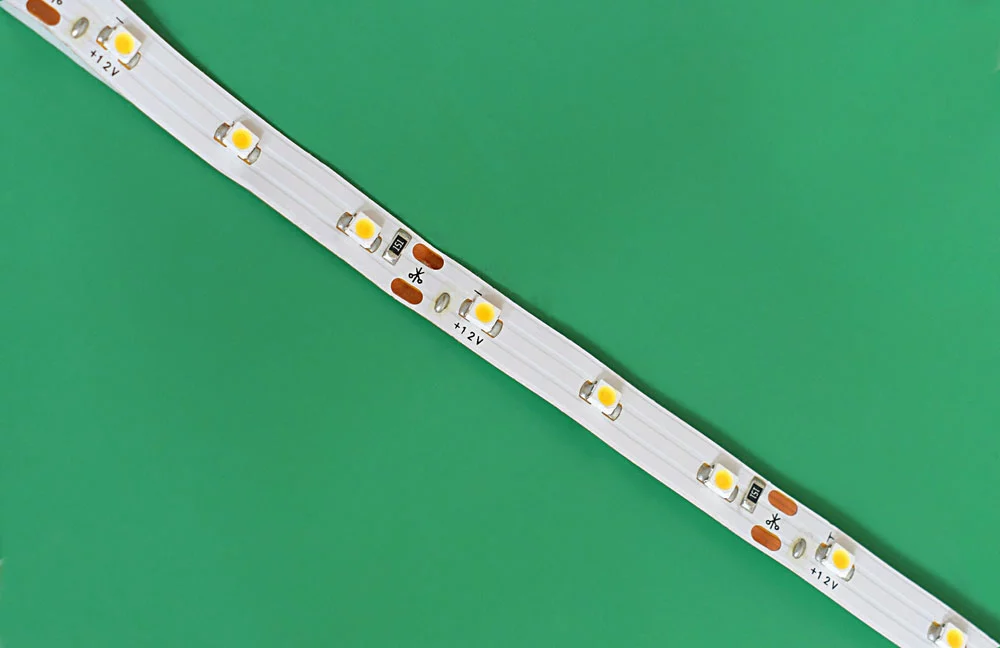
Addressable LED strips for economical lighting of premises
How Does Individually Addressable LED Strips Work?
A programmable LED light strip functions owing to the following components:
- FPCB (Flexible Printed Circuit Board)
- A microcontroller
- A power source
- Integrated circuit chips
- Light-emitting diodes (LEDs)
When you turn on the LED strip:
- The entire strip lights up according to the default settings.
- You then input a command to address the LEDs you want to produce a specific effect. Each LED requires a specific instruction sent to its unique address to produce the intended color patterns simultaneously. For instance, using an RF remote control, one can wirelessly control SPI LED controllers in RF mode.
- The data signal then proceeds to all the LEDs along the strip. Each LED in the strip requires a unique set of instructions and an appropriate address.
Addressable strips’ controllers are likewise unique; instead of only matching RGB pins like those of conventional RGB LED strips, they contain data interfaces to send more complex prompts.
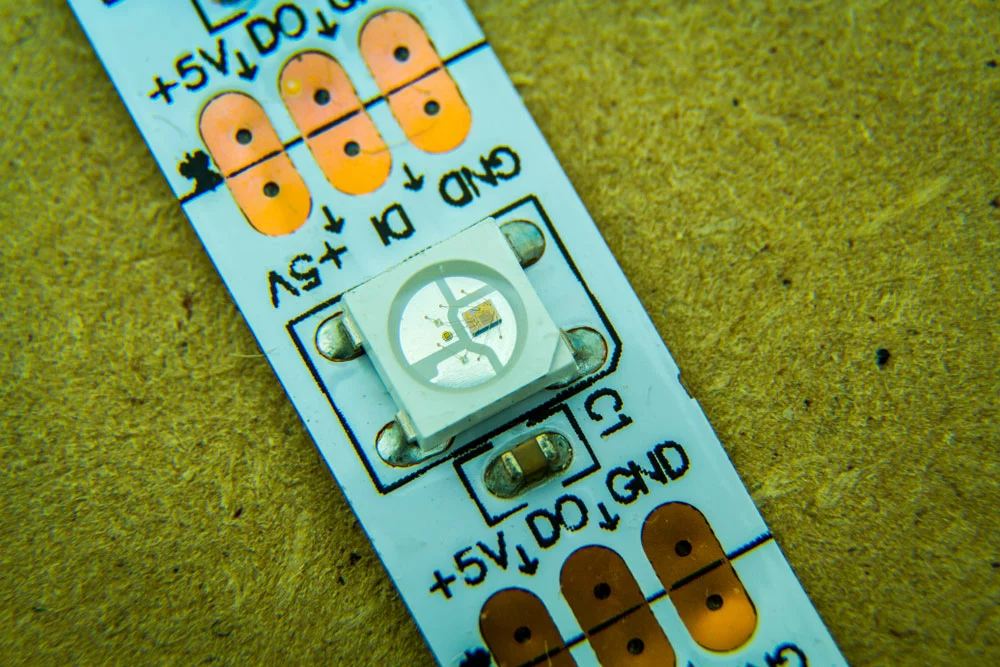
Addressable RGB led strip.
What Are the Uses of Individually Addressable LEDs?
Due to countless dynamic effects and beautiful color patterns, addressable LEDs are common in:
Home Lighting Fixtures
These strips produce uniform lighting for hidden backlighting or cabinet lighting giving your home an inviting atmosphere.
Architectural Decorative Lighting
Programmable LED lights decorate tall buildings, facades, and other structures.
Event Lighting Fixtures
Programmable LED lights serve as decorative lights for holidays, events, and exhibitions to create the ideal mood.
Display lighting
These LED strips also show exhibition lighting, hotels, and clubs.
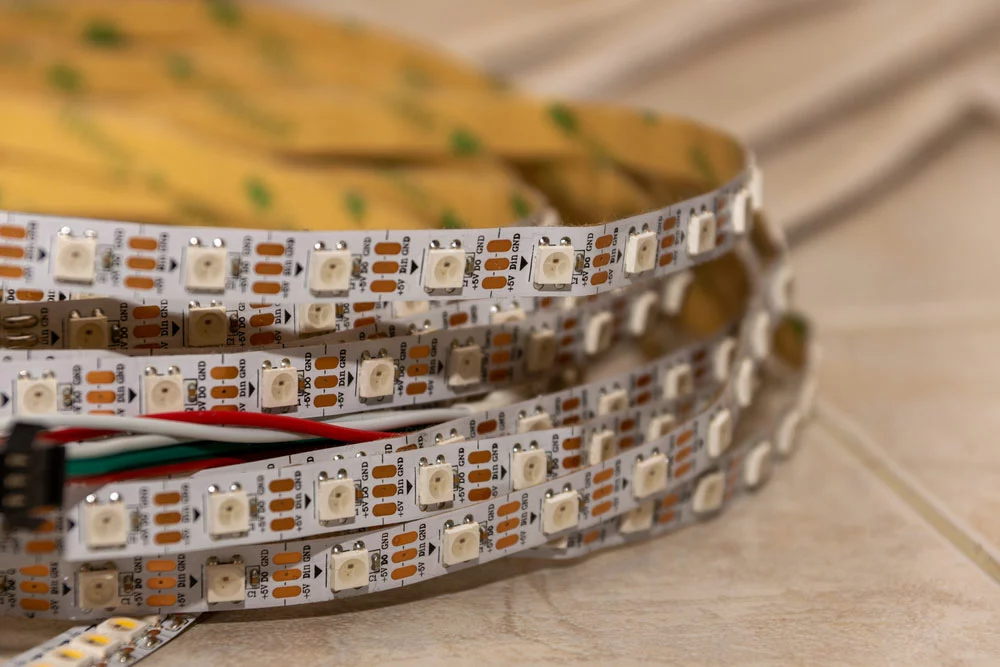
Addressable RGB light-emitting diode strip for the kitchen
Types of Individually Addressable LED Strips
The two primary categories of addressable LEDs are:
DMX512 Programmable Led Strip
DMX512 is an international standard protocol. The DMX512 programmable LED strip displays colors and alters the LED brightness in response to DMX512 protocols.
The DMX512 strips have different ICs with different performances, though they all can have the same DMX512 controller. Also, they have 512 digitally controlled channels that use a single data cable. These strips are essential for large and ultra-large advertisements, lighting, and synchronized control of light shows.
SPI LED strip
Unlike the DMX512 programmable led strip, SPI is not an international standard protocol and differs depending on the IC manufacturer. SPI Addressable led strip IC models to come in a wide variety:
- Built-in IC and external IC.
- With breakpoint resume function and without breakpoint.
- With a clock channel and without a clock channel.
They change color and brightness in response to SPI signals. The Serial Peripheral Interface (SPI) is the best fit for short-distance communication in liquid crystal displays and independent styling of small spaces.
Considerations When Choosing the Right Addressable RGB Strip
There are many variables to consider, and each application will call for a particular strip type.
- LED Density
First, you should establish the number of LEDs per meter(LED density) that suits your design aspect. With more LEDs per meter, the LED strip produces a bright and uniform light, even though this will increase power consumption.
- The Range of Colors
The color depth follows as the second factor to consider. Color depth is the number of colors the LED is capable of displaying. More bright colors are achievable with a deeper color depth, but it also consumes more power.
Voltage
Individually addressable RGB LED strips to run on 5V, 12V, or 24V. LED lights lose intensity towards the end of a strip due to electrical resistance. Always choose an LED strip with a high voltage rating. If you are using a low voltage strip, you need to connect each end of the strip to a power source.
- Power Consumption
The brightness of an LED strip increases with an increase in power. As a result, the higher the power rating of a strip, the better the brightness of the LED strip. It would be best if you consider the current rating of the LED strip before settling on one.
- Type of Integrated Circuit Chip (IC)
The type of integrated circuit chip in an addressable strip often dictates colors present in a strip and their brightness too. These circuits vary in terms of size and the colors they are capable of producing.
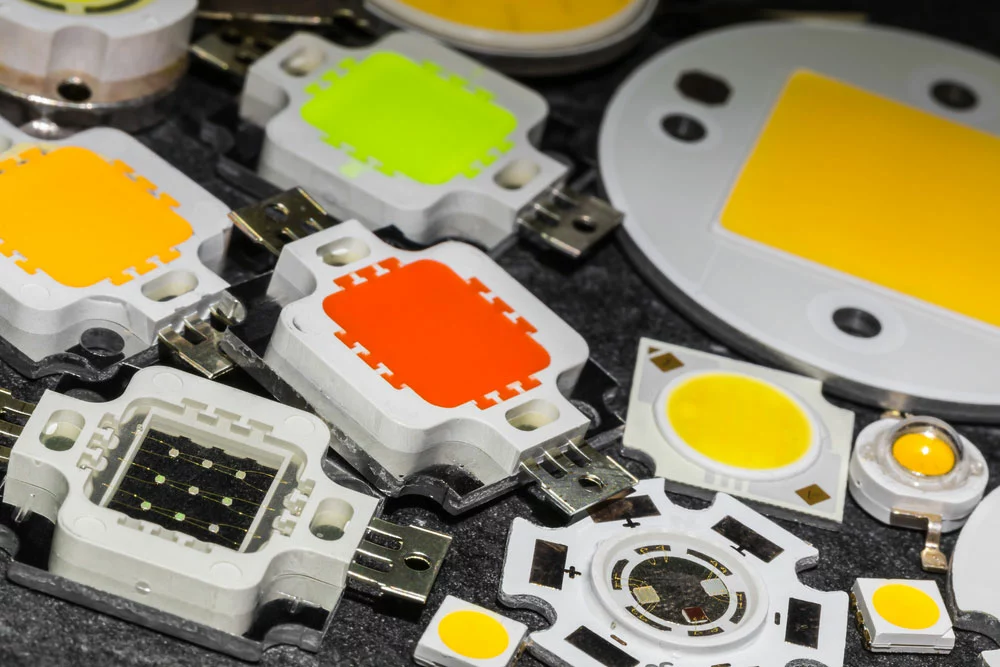
LED Chips
- IP Grade
IP code is a classification system that defines the level of protection that electrical and mechanical casings offer against infiltration.
If you plan to install your LED strips outdoors, you should consider using the IP65 or a higher-quality addressable LED strip. They are ideal for the harsh external environment.
Additionally, IP67 or perhaps IP68 grade material would be safe for designs that submerge in water.
How Can You Wire Addressable LED Strips?
You can’t just plug a programmable LED strip into a battery and immediately have the LED strip light. You should wire a controller first to transmit data and individually set the brightness of each LED.
Addressable LED strips typically have a three-pin connector:
The VCC pin draws current into the circuit while the ground pin links to the circuit board’s ground.
When using a DMX512 programmable LED light, one uses the data pin to program the DMX512 address into the DMX512 ICs. Configuration only happens once for the DMX512 IC to save the data.
In contrast, the SPI programmable LED strip doesn’t require an address configuration before use. Again, the wiring diagrams for the various SPI programmable LED manufacturers also vary.
Luckily, the LED strip’s arrows show which way the data flows to guide you in placing the controller on the data input side.
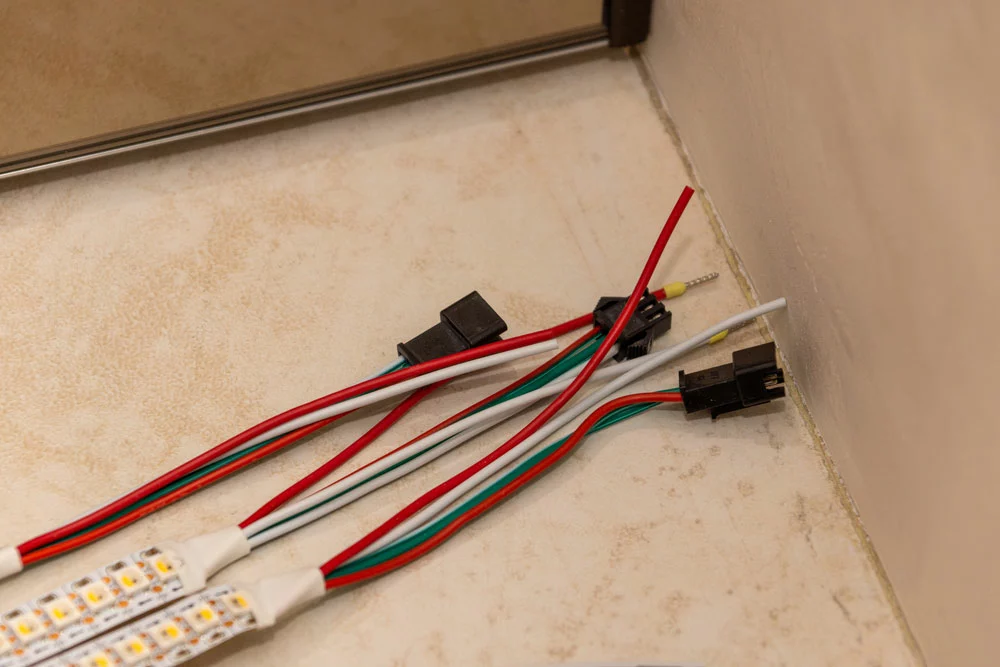
LED strip connectors
How Can You Control an Addressable LED Strip?
With a controller, you can easily command the addressable LED strip. A controller delivers commands to the addressable strip. There exist several controllers that perform different tasks.
Here are some controllers you can use:
The SPI Controller
The SPI controller provides voice, music, Wi-Fi, RF, Bluetooth, and controls for remote-controlled LED strip lights. You only need to inquire whether the SPI controller can control the IC in your addressable LED strip.
To ensure that the LED lights of the entire light strip are lit, the pixel of the SPI controller must be greater than the pixel of the addressable led strip.
The Art-net DMX Controller
The Art-net DMX controller can integrate various DMX devices to control numerous groups of light strips sequentially or separately.
An Open-Source Development Board Controller
Arduino UNO and Raspberry Pi are the best examples of open-source development boards. The development boards are easy to use and intuitive and come in handy in complex DIY projects involving LEDs.
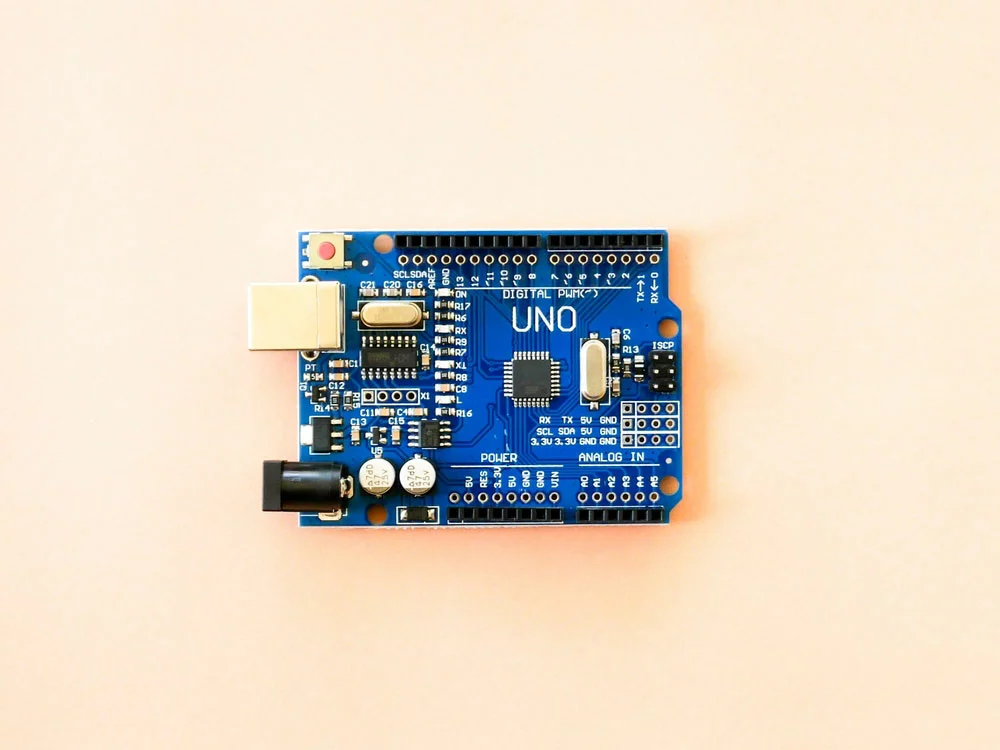
Arduino UNO R3
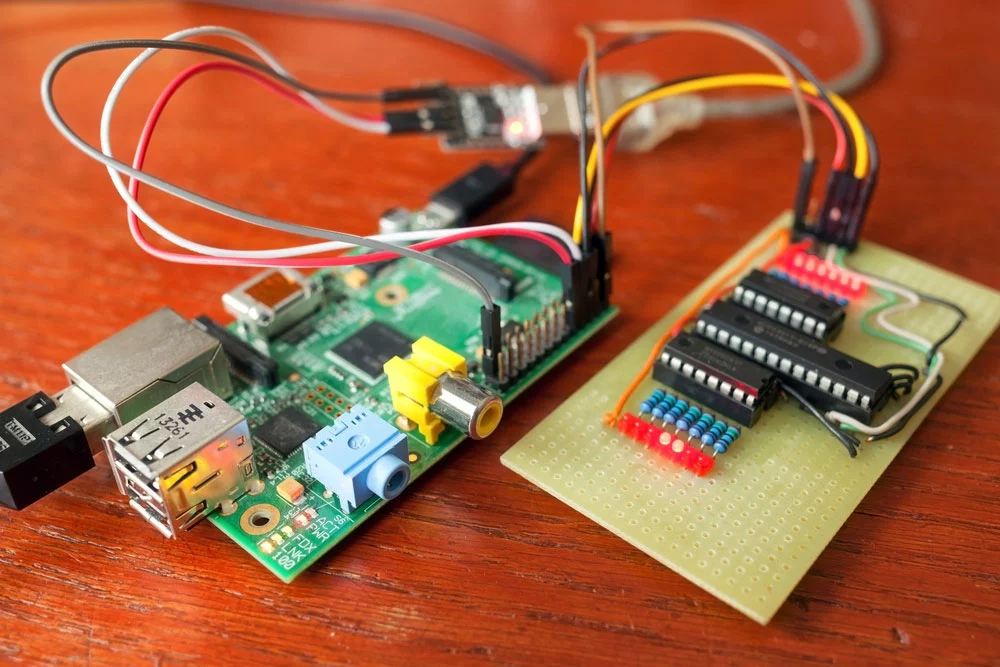
Tabletop illustration with Raspberry Pi
What Is the Difference Between Addressable and Regular Analog LED Strips?
Color change
The analog strips only have a single color run at a time, although you can opt to modify the color whenever you want, but not for a specific group of LEDs.
Addressable LEDs allow for individual control of each LED, creating various colors in multiple LED strip segments.
Controls system
A DMX unit can control an analog LED strip via the DMX signal, where you can select the color and level of brightness for the whole LED strip.
On the other hand, programmable LED strips require you to feed video material for the LED strips. Generally, you can use computer software as a video source, a live video stream, or an SD card to control Addressable LED strips.
Typical usage
Analog LED strips are widely seen in indoor and outdoor lighting in retail outlets. They act as a background with a constant decorating light.
Addressable LED strips are common in club interiors and TV studios. They offer amazing dynamic light effects due to a broader range of color spectrums.

LED lights outdoor matrix board
Conclusion
The advancement in the development of programmable LED lights has brought about greater experience by allowing lighting systems the flexibility to change. From remote-controlled LED strips, addressable LED strips are now at the pinnacle of LED strip innovation.
With greater control of your lighting systems, your lighting project can become a reality now with addressable LED strips. All you need is the appropriate addressable LED strip manufacturer. If you have any questions, please contact us on our website.
